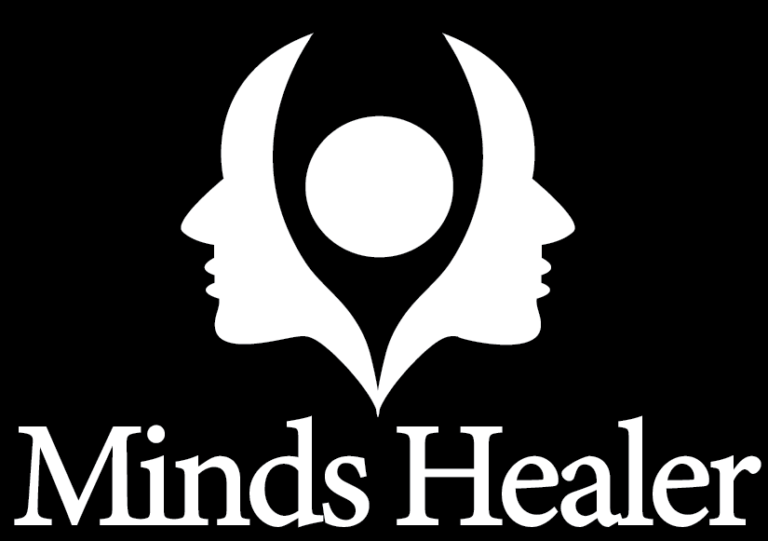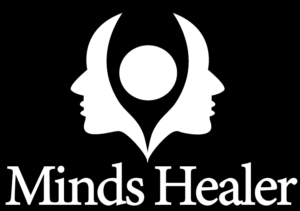Remember the spinning gadget shown in the picture above? Is it related to ATTENTION-DEFICIT/HYPERACTIVITY DISORDER and are there remarkable ways to handle ADHD in Children?
It is the fidget spinner which became a sensation in 2017, almost overnight. The fad of this toy grew so instantaneously that experts worldwide became curious about the reason behind this trend. A plethora of research studies and articles were written on this spinning toy whose demand spun out of control. It was allegedly claimed to be helpful for children and adults who were suffering from fidgeting symptoms i.e. constant extreme level of movement where one cannot stay still for long. This usually happens in anxiety, autism, or ADHD (Attention-Deficit/Hyperactivity Disorder). However, later proved wrong, this toy brought a remarkable change in society – it sparked a discussion in society about ADHD and what would work for these kids.
See what a psychologist working in this field has to say about fidget spinners https://youtu.be/Srj14LU_6Ys
However, it is necessary to draw a difference between children who are disobedient in class or at home and children who are perceived as bad/misbehaved due to their inattentive or hyperarousal symptoms caused by ADHD.
What behaviours, then, would constitute a diagnosable condition?
Comprehending Attention-Deficit/Hyperactivity Disorder (ADHD) in children
ADHD is a neurodevelopmental disorder that affects children, adolescents, as well as adults around the world. It involves a continuing pattern of diminished sustained attention, and increased impulsivity or hyperactivity. There is a significant impairment of functioning in academic as well as social and interpersonal situations in this disorder. During school years, children with ADHD may have lower scores (even if they have normal IQ) and repeated discipline problems like showcased by Shivani in the case mentioned above.
The criteria for the diagnosis of ADHD has two sets of symptoms relating to the two components of the disorder –
- Inattention
- Hyperactivity
Earlier, it was believed that symptoms of ADHD were subsided by adolescence. Now, the researchers and clinicians have recognized that people with ADHD sustain to experience the symptoms during adolescence and even adulthood. However, the symptom profile changes from childhood to adolescence.
The symptom of hyperactivity and constantly high levels of movement which is so peculiar in childhood years, diminish by adolescence but the attention problems remain. Adolescents with ADHD also face considerable difficulties in executive functioning which includes tasks like –
- Self-reflection
- Self-control
- Planning
- Resistance to distraction, and
- Emotional regulation, etc.
Because of this, they might increasingly engage in high-risk activities like substance abuse, unprotected sex, and reckless driving. They also have a wide range of behavioral, academic, and interpersonal problems.
Characteristics of ADHD
As per DSM-5, there are no subtypes of this disorder, but there are three specifiers that clinicians use in diagnosis. They are,
- Predominantly inattentive – If the child meets the criteria for inattentiveness but not hyperactivity-impulsivity for the past 6 months,
- Predominantly hyperactive-impulsive – If the client meets the second set of criteria but do not show inattentiveness for the past 6 months, and
- Combined presentation – For the past 6 months, the client has shown symptoms of both the criteria.
The symptoms necessary for diagnosis of ADHD are,
INATTENTION:
- Does not pay close attention to details and makes silly or careless mistakes in schoolwork or other activities
- Has difficulty in sustaining attention in any task or play activities
- When spoken to directly, he/she often does not seem to listen
- Cannot follow through on the instructions provided by teachers or parents
- Fails to finish his/her work or duties
- It is difficult for them to be organized
- When any activity demands sustained cognitive effort like homework, he/she avoids or dislikes performing them
- Frequently loses stuff that is necessary like toys, stationery, books, tiffin box, etc.
- He/she is distracted by the smallest of external stimuli
- He/she is forgetful in doing chores.
HYPERACTIVITY AND IMPULSIVITY
- Constant fidgeting with hands or feet or cannot stay still at one place
- Leaves the seat in the classroom
- Runs or climbs excessively
- Cannot play or engage in leisure activity involving sitting and playing quietly
- He/she is constantly ‘on the go’
- Talks excessively
- Blurts out answers before the entire question is completed
- Turn-taking is difficult for them because they are unable to wait for their turn
- Frequently interrupt others while they are conversing or playing games.
For teenage girls, the diagnosis is especially complicated and hence, the symptoms are often missed by teachers or clinicians. The symptoms include,
- Forgetfulness
- Disorganization
- Low self-esteem
- Diminished discipline, or demoralization
The hormonal changes at puberty intensify the symptoms, and they become anxious, depressed, and socially withdrawn. However, some teenage girls also become hyper-talkative or emotionally over-reactive which again is mistaken for ‘typical’ adolescent behavior.
Causes of ADHD
Biological causes of ADHD are well-established and highly supported by research.
- Genetic factors – The estimated heritability of ADHD according to experts is as high as 76% which is among the highest rates of all psychiatric disorders. Several genes related to dopamine are claimed to be contributing to the symptoms of this disorder.
- Dysfunction in neurotransmitters – Several neurotransmitters have been implicated in the emergence of symptoms. However, dopamine remains to be the focus of the investigation which suggests that deficits in reward patterns may contribute to the symptoms.
- Anatomical factors – The prefrontal cortex which is responsible for high utilization of dopamine also plays a part in the development of symptoms of ADHD because of its role in attention and regulation of impulse control. Researchers have also found structural brain abnormalities in individuals with ADHD and it has been believed that a network of interconnected brain areas involved in attention, inhibition, decision-making, working memory, vigilance, etc. are instrumental in causing ADHD symptoms.
However, researchers have unanimously agreed that these biological factors interact with environmental exposure resulting in the emergence of ADHD symptoms. The environmental stressors include,
- Birth complications
- Acquired brain damage
- Exposure to toxic substances or infectious disease
- Marital stress of parents
- Chronic abuse or maltreatment
- Neglect, etc.
Treatment of ADHD
Treatment of ADHD is focused on managing the symptoms of this disorder as there is no known ‘cure’ for ADHD. The treatments range from pharmacotherapy i.e. prescribing medications to psychosocial therapy and behavioral interventions.
Pharmacotherapy or Medications – Medication is often an important part of the treatment of children with ADHD. There are two categories of medications that are often prescribed, stimulants and non-stimulants. Central nervous stimulants have shown to be highly efficacious with mild side effects.
Medication for ADHD helps in concentration or reducing the hyperarousal but there is little evidence suggesting that medication improves school performance or interpersonal relationships of the child over a long-term period. Additionally, there are too many side-effects ranging from milder ones (headache, trouble in sleeping, reduced appetite, irritability, etc.) to more serious (rare) ones like increased blood pressure, seizures, suicidal thoughts, growth suppression. Also, the long-term damage of these powerful medications on the developing brain of the child is still unknown.
Hence, pharmacotherapy can be a complementary tool but not the primary and only form of treatment for ADHD.
Psychosocial therapy – A number of interventions have been found to be effective in reducing the symptoms of ADHD and also help these children to function better interpersonally and socially and in academics. Psychosocial treatments are based on the notion that the child is capable of being responsible for meeting certain reasonable expectations. These treatment options include,
Psychoeducation – This is the starting point of the treatment of ADHD. It is beneficial for parents of children with ADHD and adolescents suffering from ADHD to know about the condition and how it impacts quotidian functioning. This will help the parents to understand their child better, not blame them for their behaviors, avoid the triggers, and plan their schedule accordingly. Psychoeducation will also help adolescents with this disorder to develop appropriate coping strategies and deal with symptoms in a better and improved fashion. This instills hope and optimism as they start looking at the condition as treatable.
Psychotherapy – Individual therapies are increasingly used with adolescents with ADHD. It provides them a context in which client and clinician can together set treatment goals of,
- Conflict resolution
- Solving problems
- Opening about their feelings
- Handling interpersonal relationships better
- Managing major transitions in life and also
- Dealing with co-existing problems like depression or anxiety
Intervention techniques like cognitive-behavioral therapy can help adolescents change maladaptive behavior and thought patterns. These thought patterns become deep-rooted because of the constant negative narratives from teachers, parents, and peers.
Behavioral intervention – Behaviour therapy has shown to be very successful in treating children with ADHD. The American Academy of Pediatrics highlights three basic tenets of behavioral approach:
- Setting goals – It is important to set specific and clear goals for the child like staying focused on schoolwork for 15 minutes.
- Reward and consequences – Provide rewards and praises to the child whenever he/she displays desired behaviors. But, when they fail to meet a goal, set a consequence for that behavior like less playtime or decreased TV time.
- Continue using this plan and monitor the progress – Consistently using such reinforcements for a long time will shape the child’s behavior in the desired way.
It is important to be patient in this therapy as one day the child may behave appropriately; but the next day, he/she may go back to the old patterns of behavior. Coordinating these efforts with comparable intervention by the teachers or the parents shall improve the child’s self-control.
Behavioural approach with Vatsal
Vatsal, a 6-year-old, was diagnosed with ADHD. At school, he gave a hard time to the teachers because of his impulsive behavior and poor concentration. He would not seem to listen and constantly interrupt the class every few minutes when the teacher would be teaching. The teacher then taught him to ask her before talking in class or before getting up. Vatsal, at first, did not obey. But the first time when he raised his hand before speaking, the teacher rewarded him with a star sticker and the class clapped for him.
Then, slowly over time, he started raising his hand before interrupting the class. Then, the teacher told him that she would reward him with two stickers if he raised his hand to talk only three times in 30 minutes. With enough reinforcement, time, and patience, this was achieved too. In a similar manner, rewarding even small steps towards desired behavior can shape the child’s new behavior.
Social skills training
Children with ADHD often have difficulties in dealing with their social and personal environment. Social skills training would provide the child with an opportunity to build skills to play and work well with others. Such training involves a therapist demonstrating appropriate behavior and then the child is asked to practice by repeating the same. Skills that can be taught by the therapist include –
- Turn-taking
- Sharing
- Asking for help
- Dealing with bullying/teasing
- Raising hand before interrupting
- Focusing on a task
- Reading others’ reactions, etc.
They can also work on how to transfer these newly learned skills to the real world.
Self-management training
Incorporating structure to the child’s routine would help him/her to manage the symptoms of ADHD better. These would include introducing simple strategies that can make his daily tasks and responsibilities more feasible like,
- Making to-do lists
- Using appointment books
- Keeping notepads in useful locations
- Using post-its
- Giving time-outs or breaks, etc.
Nowadays, even technology can help adolescents with ADHD to communicate more effectively, also to write and spell correctly, and in staying organized, remembering information, staying on schedule, keeping track of time, reminding the daily chores or schoolwork, etc.
Group therapy
This helps children with ADHD in refining their social skills as well as increasing their self-esteem and confidence in a social setting like schools. They can be asked to work in pairs for a fun task or a game. Gradually, they could be taught to follow instructions, wait for their turn, pay attention to the task and they would be praised for successful cooperation, and for each small step towards the goal. This sense of success can be very useful for a child with ADHD who has great functioning difficulty in a group setting.
Parent training
Parent training is instrumental in the treatment of ADHD. Parent training is focused on helping parents develop usable behavior interventions for their children to improve the child’s social and academic behaviors. It gives the parents tools and techniques for understanding and managing the symptoms presented by their children. Some techniques are,
- Providing immediate rewards for the desired behavior of the child
- Using timeouts or giving time breaks whenever the child becomes too unruly or out of control.
- Spend time with the child to share a common relaxing activity.
- Never miss an opportunity to underline and praise his/her strengths and abilities.
- Structure of the child’s routine so that he/she is able to manage a responsibility or task by himself/herself.
- Use mindfulness methods or meditation or some other exercises with the child to help him/her manage the stress.
Other therapies may include family counseling, career counseling, academic skill remediation, etc. Accommodations at school or at home can facilitate productivity and minimize distractions. It will be beneficial to restructure tasks that capitalize on the child’s strengths.
Tips for Parents of Children with ADHD
Living with a child with ADHD can be physically and mentally exhausting. Sometimes the child’s behaviour may lead to frustration which in turn can lead to anger. It may also make you anxious or stressed.
But as a parent, you can do a few things that would help control the symptoms, overcome daily challenges, and bring calmness to the family. Being in a home that gives both love but structure to the child can be an enriching environment for him/her to learn to manage ADHD.
Tip 1: Keep a positive outlook.
You might have to make some compromises but have belief in your child. His problematic behaviors are not intentional. One thing that will help, is to make a written list of all the things that you find positive, valuable, unique, and interesting about your child.
Tip 2: Take care of yourself
You may feel exhausted and need a space for yourself. Take time breaks in a day when you can relax and focus on yourself. Seek support if the stress is harming your mental health. Try to meditate or exercise. It will help you relax and find solace in chaos. Eat right and also get enough sleep.
Tip 3: Structure of the routine.
Children with ADHD are more likely to succeed in completing a task when the task and pattern are predictable and known. If a schedule is created and followed persistently in the house, it will be easy to manage the symptoms of ADHD. Place clocks and timers in the house and allot specific time for all activities of the child from getting up to doing homework or playing with toys. It is a good idea to avoid ‘idle’ time for a child with ADHD.
Tip 4: Break-down the task
Simplify the tasks of the child into smaller and more doable steps.
Tip 5: A quiet place
Ensure that the child is working in a quiet environment with a minimum level of distractions, so that, he/she is able to concentrate completely on the task given.
Tip 6: Be an example
It will help the child to look up to you and follow your actions. Keep everything in place and make sure your child knows that place. Lead the example by being as much neat and tidy as possible.
Tip 7: Sports and sleep
Children with ADHD have excessive energy to burn. Find a sport that suits the strengths of your child and encourage him/her to participate in that sport. Also, it will help the child with ADHD to sleep better. Make sure the child gets enough sleep. Lack of sleep can make anyone inattentive.
Tip 8: Rewards and consequences
Set clear rules and guidelines for them to follow. And reward the child with praise or a compliment for every little achievement. Give as few negative responses as possible to his/her misbehavior. When the child misbehaves, ask him what they could have done instead and make them demonstrate it. This shall help him/her to improve their attention, increase concentration, and impulse control.
Tip 9: Healthy diet
The food child eats should be balanced. Products containing caffeine or junk food or sugary food should be avoided. Children with ADHD often have unhealthy food eating habits; make sure you prevent that by scheduling appropriate meals every three hours.
It is not easy to deal with children having ADHD but soon you will realize that all the efforts you take, are absolutely worth it. Be patient and do not give up.
References –
- https://www.naturalbeachliving.com/history-of-fidget-spinners/
- https://www.healthline.com/health/adhd/treatment-overview#medications
- https://www.helpguide.org/articles/add-adhd/treatment-for-childhood-attention-deficit-disorder-adhd.htm
- https://www.helpguide.org/articles/add-adhd/when-your-child-has-attention-deficit-disorder-adhd.htm
- American Psychiatric Association. (2013). Neurodevelopmental Disorders. In Diagnostic and statistical manual of mental disorders (5th ed.). https://doi.org/10.1176/appi.books.9780890425596.dsm05
- Sadock, B.J., Sadock,V.A., & Ruiz, P. (2015). Child Psychiatry. In Synopsis of psychiatry: Behavioral Sciences Clinical Psychiatry (11th ed.). New York: Wolters Kluwer.
- Whitbourne, S. K., & Halgin, R. P. (2014).Neurodevelopmental Disorders. In Abnormal psychology: Clinical perspectives on psychological disorders (7th ed.). New York, NY: McGraw-Hill.
Please visit our website to read more related blogs!



